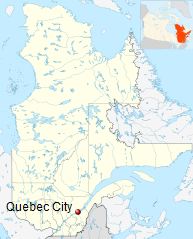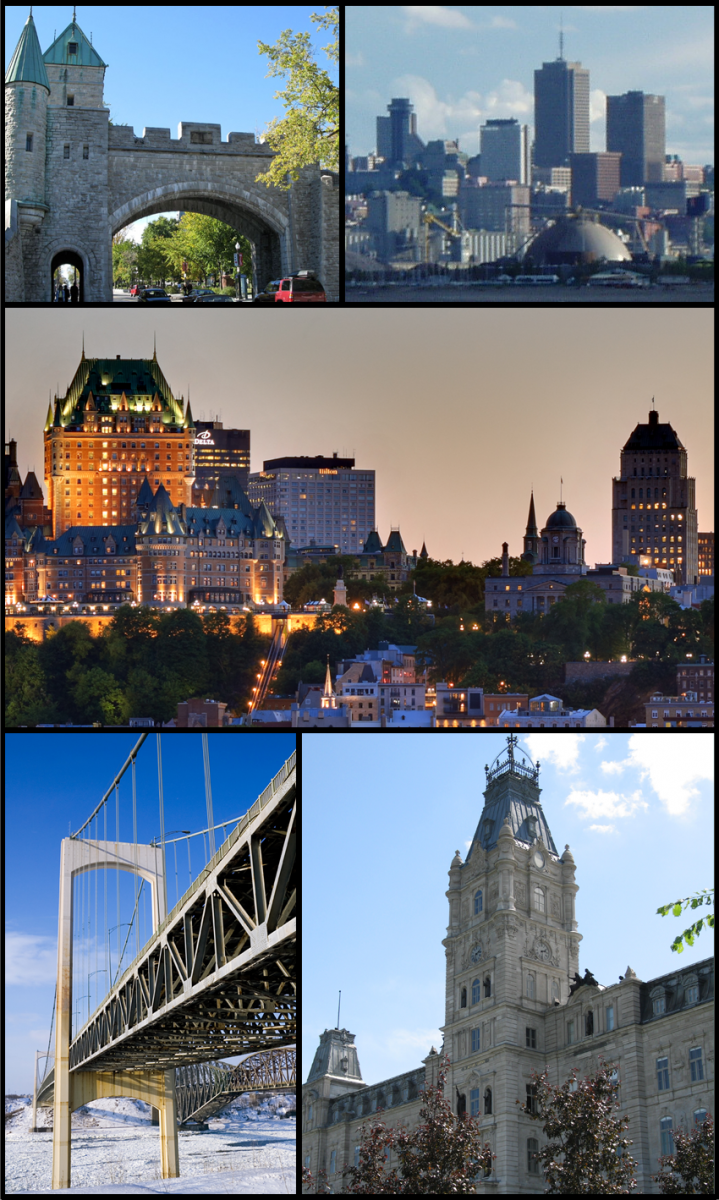- Study in AustraliaAustralian Universities/CollegesPrograms by faculty AusAustralian VisasLife in Australia
- Study In New ZealandNew Zealand UniversitiesPrograms by Faculty NZNew Zealand VisasLife in New Zealand
- Study in CanadaUniversities/Colleges in CANADAPrograms by faculty CanadaCanadian VisasLife in Canada
Quebec City
| Quebec City | |||
| Quebec, also Québec, Quebec City or Québec City (French: Ville de Québec) is the capital of the Canadian province of Quebec. As of 2011, the city has a population of 516,622, and the metropolitan area has a population of 765,706, making it the second most populous city in Quebec after Montreal, which is about 233 kilometres (145 mi) to the southwest. The narrowing of the Saint Lawrence River proximate to the city's promontory, Cap-Diamant (Cape Diamond), and Lévis, on the opposite bank, provided the name given to the city, Kébec, an Algonquin word meaning "where the river narrows". Founded in 1608 by Samuel de Champlain, Quebec City is one of the oldest cities in North America. The ramparts surrounding Old Quebec (Vieux-Québec) are the only remaining fortified city walls that still exist in the Americas north of Mexico, and were declared a World Heritage Site by UNESCO in 1985 as the 'Historic District of Old Québec'. | | ||
 | |||
| According to the federal and provincial governments, Québec is the city's official name in both French and English, although Quebec City (or its French equivalent, Ville de Québec) is commonly used, particularly to distinguish the city from the province. The city's most famous landmark is the Château Frontenac, a hotel which dominates the skyline. The National Assembly of Quebec, the Musée national des beaux-arts du Québec (National Gallery of Quebec), and the Musée de la civilisation (Museum of Civilization) are found within or near Vieux-Québec. According to the 2011 census, there were 516,622 people residing in Quebec City proper, and 765,706 people in the city's census metropolitan area. While Montreal is considered by many to have a bilingual population, in which many of its residents have a working knowledge of both French and English, Quebec City and its surrounding region are largely Francophone. The vast majority of city residents are native French-speakers. The English-speaking community peaked in relative terms during the 1860s, when 40% of Quebec City's residents were Anglophone. Today, Anglophones make up only 1.5% of the population of both the city and its metropolitan area. However, the annual Quebec Winter Carnival attracts both Francophone and Anglophone tourists alike, so the Anglophone population increases considerably during the duration of the event. According to the 2001 census, over 90% of the population was Roman Catholic. The city also contains small Protestant, Muslim and Jewish communities. Most jobs in Quebec City are concentrated in public administration, defence, services, commerce, transport and tourism. As the provincial capital, the city benefits from being a regional administrative and services centre: apropos, the provincial government is the largest employer in the city, employing 27,900 people as of 2007. CHUQ (the local hospital network) is the city's largest institutional employer, with more than 10,000 employees in 2007. In 2008, the unemployment rate in Quebec City was 4.5%, well below provincial and national averages (7.3% and 6.6%, respectively). Quebec City is known for its Winter Carnival, its summer music festival and for its Saint-Jean-Baptiste Day celebrations. Tourist attractions located near Quebec City include Montmorency Falls, the Basilica of Sainte-Anne-de-Beaupré, the Mont-Sainte-Anne ski resort, and the Ice Hotel. There are a number of historic sites, art galleries and museums in Quebec City, such as Citadelle of Quebec, Musée national des beaux-arts du Québec, Ursulines of Quebec, and Musée de la civilisation. | |||
For more information, please contact one of our offices
Study in Australia | Study in the UK | Study in Malaysia | Study in Canada | Study in the USA | Study in New Zealand















